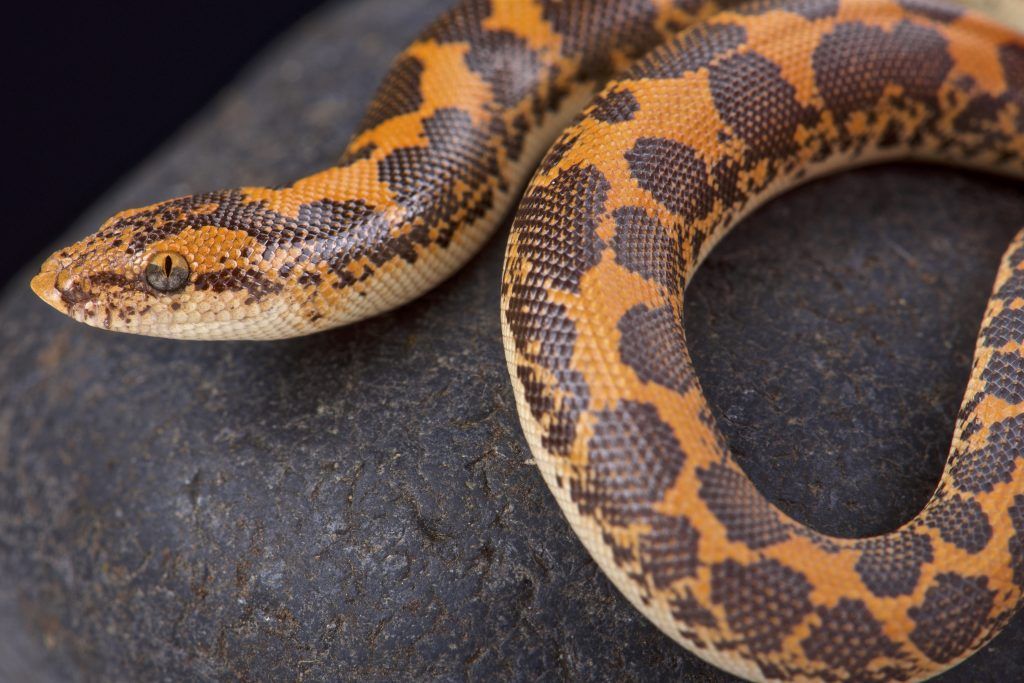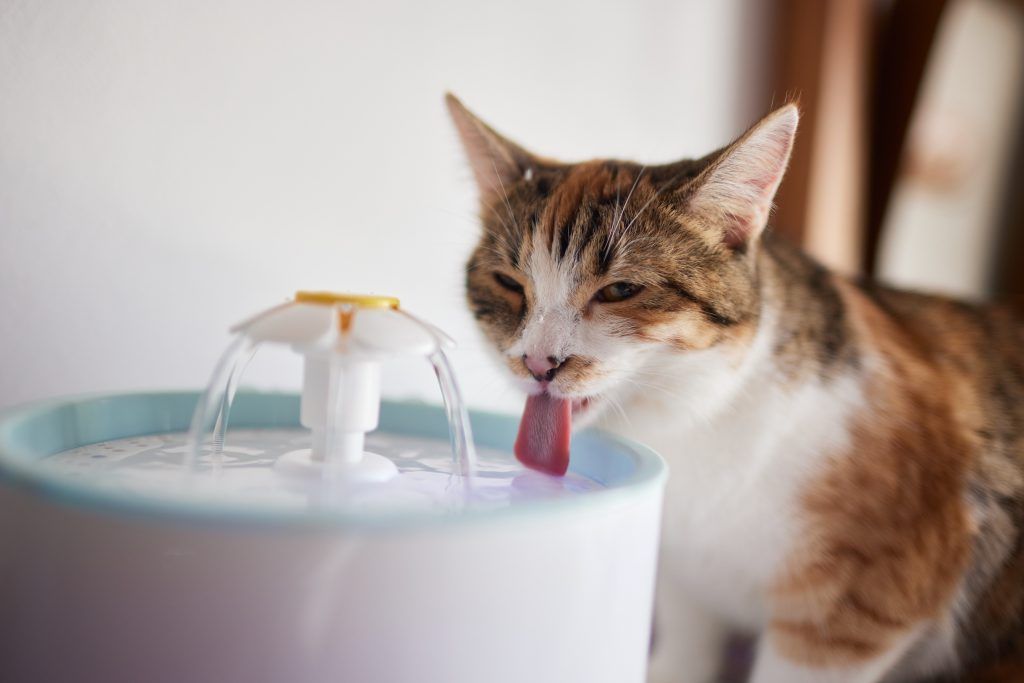Green iguanas are one of the most popular reptile pets in the world. They are known for their large size, spiny crests, and herbivorous diet. But did you know that green iguanas can also come in different colors and patterns? These variations are called morphs, and they are the result of selective breeding or genetic mutations.
But first –
What is a morph?
A morph is a term used to describe a variation in the appearance of an animal within the same species. Different factors, such as environmental conditions, diet, hormones, or genetics can cause morphs. Some morphs are natural, while others are artificially created by breeders who combine existing natural mutations or line breed traits to produce new, attractive colors and patterns.
Morphs are not the same as subspecies, which are animal groups with distinct genetic differences and can interbreed to produce fertile offspring. Morphs are also not the same as hybrids, the offspring of two species that usually cannot reproduce.
What are the types of green iguana morphs?
There are several types of green iguana morphs being bred today, most of them the result of recessive gene mutations or combinations of genes. But a few are naturally occurring subspecies of green iguana with an incredibly unique look. Take a look at some of these incredible iguanas!
Axanthic Blue Iguana
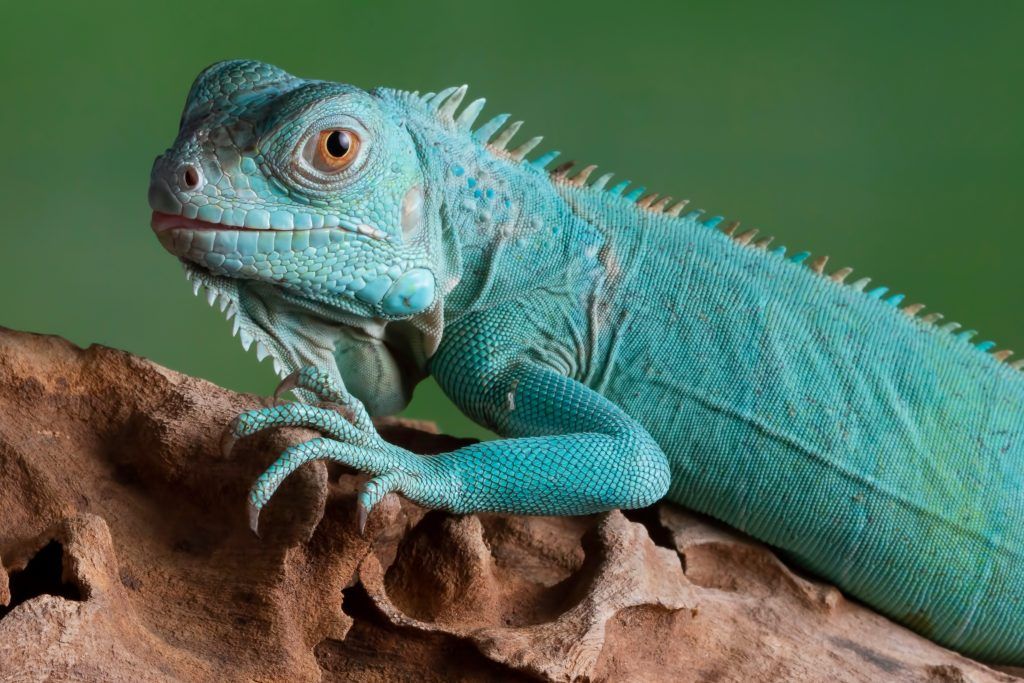
Photo Credit: Shutterstock
Axanthic green iguanas have a bright, beautiful blue coloration instead of the standard green. This is because the axanthic gene prevents the development of yellow pigment.
The axanthic gene is a recessive mutation in green iguanas, requiring both parents to pass down a copy to get a visual blue iguana.
These blue iguanas aren’t especially rare or expensive, despite their incredible look. Average prices range between $100 – $150.
Red Iguana
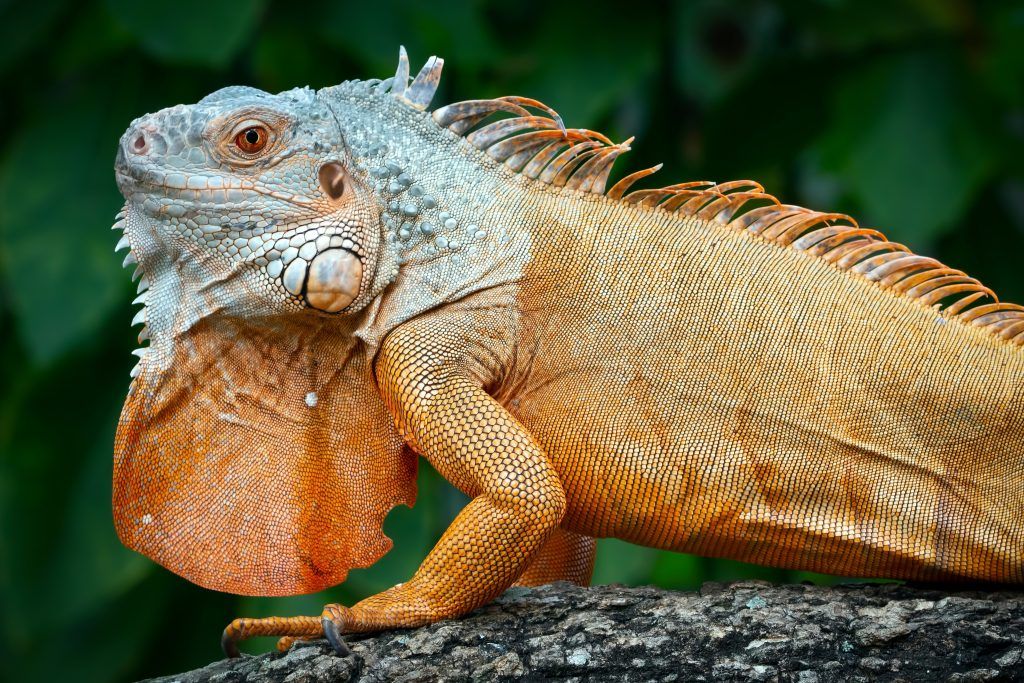
Photo Credit: Shutterstock
Depending on who you talk to, you might hear that red is an iguana color morph – it’s not. Red iguanas are a subspecies of green iguana that are primarily found in the western parts of Costa Rica. But that doesn’t mean they aren’t incredibly cool to look at!
True red iguanas have green or greenish-blue on their heads and bellies.
Albino T+ and T-
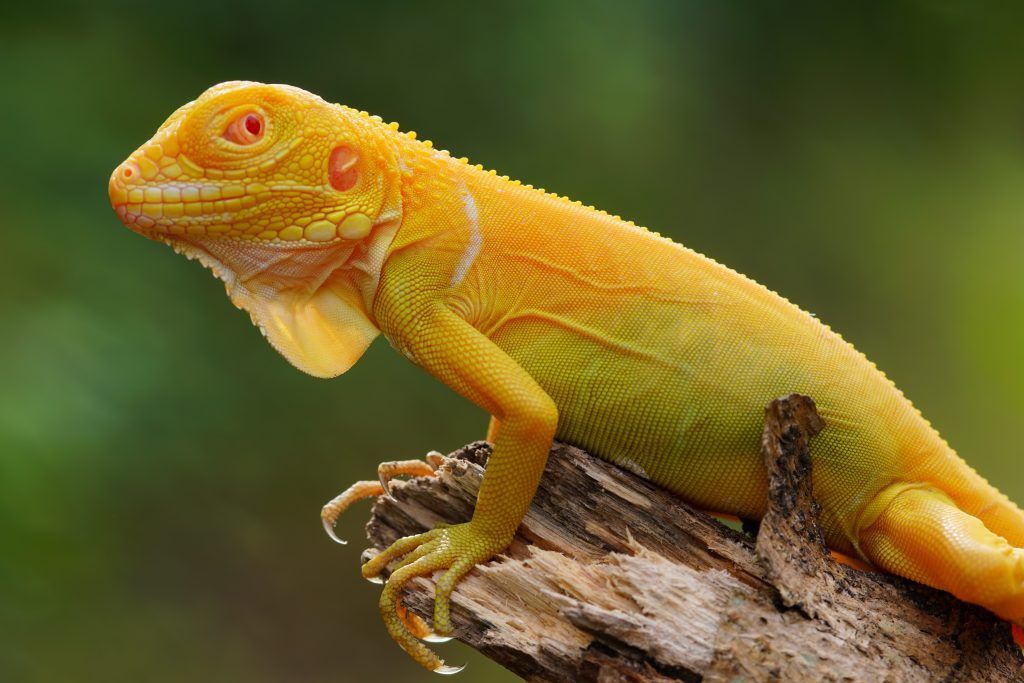
Photo Credit: Shutterstock
There are two types of albinism that occurs in iguanas – T-positive and T-negative. The genes responsible for each type are not compatible with each other, even though they both result in albinism.
T-negative albino is also referred to as “true albino” and these iguanas have the traditional albino look most people expect. Yellow to pale yellow coloration and red eyes.
T-positive albino iguanas on the other hand are often called “caramel” and have more orange coloring along with the yellow. They also have red eyes but not as distinctly as their T-negative counterparts.
Both albino types typically have difficulties with their vision and can’t see as well as normal green iguanas or some of the other morphs. Some people say this results in them being more mellow and docile. The jury is still out on that one.
The average price for an albino iguana is between $400 – $1,000 with some line-bred strains like the Crutchfield albino going up to $2500 or more.
Snow / Blizzard
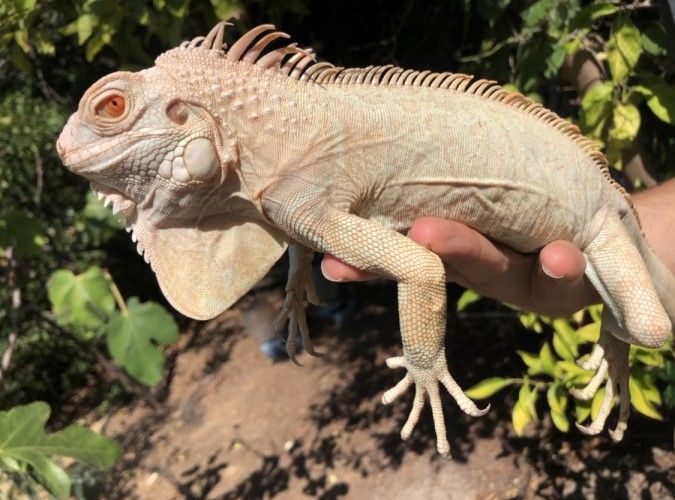
Photo Credit: Brentwood Iguanas (FC)
The snow, or blizzard, morph is the result of combining T-negative albino with blue (axanthic). Babies born with all the necessary genes will be almost solidly white with pink eyes and pink hues on their face and back.
Because of the difficulty in getting two visual recessive mutations in one animal these snow iguanas are quite rare.
The average price for a snow iguana is around $800 now. Because of their rarity, it’s hard to nail down a true average price. At the moment, I can only find 2 for sale, one is listed for $800, and the other is listed for $13,000. I did find a few that sold within the past 2 years for $4,000. Time will tell if the prices are coming down or if there is just one person selling them cheaply.
Hypomelanistic
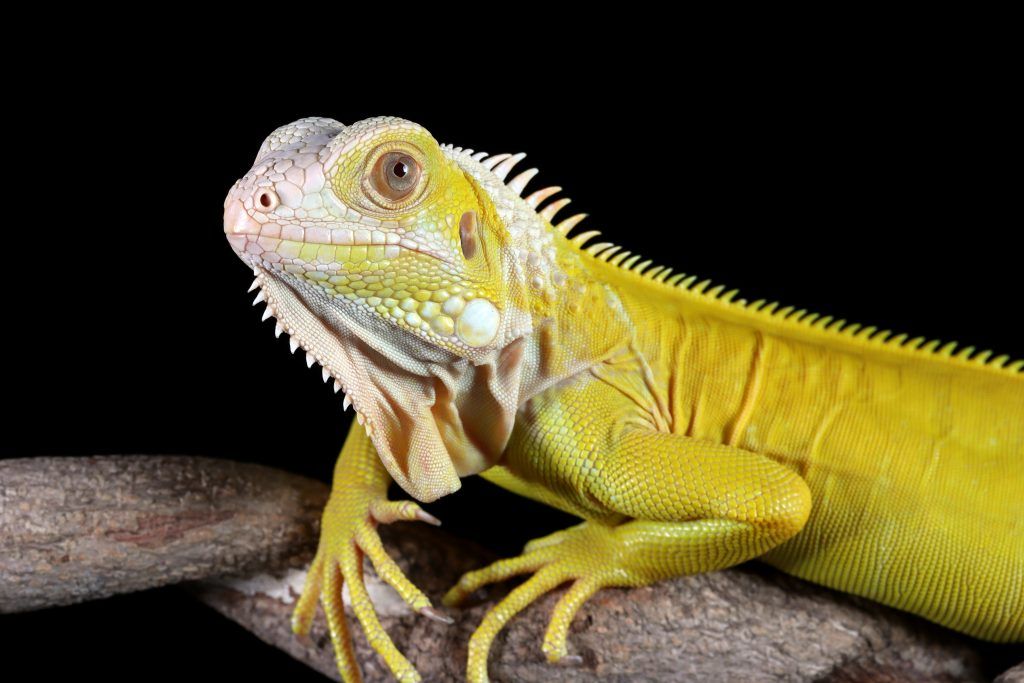
Photo Credit: Shutterstock
Hypomelanism is a recessive gene that produces bright yellow iguanas. Hypo, short for hypomelanism, is a mutation that prevents the iguana from producing black pigment.
There are different quality levels of hypo, some iguanas will still produce some black in the form of spots or banding. While a high-quality hypo will have zero black, or extremely minimal, anywhere on it’s body.
Hypo iguanas look a lot like an albino but they don’t have the red albino eyes and do not have vision problems. During breeding time iguanas often experience a color change, and hypo iguanas can produce bright red bands on their back and sides. It’s very beautiful, but not permanent.
The average price for a hypo iguana ranges between $600 to $800 typically.
Crimson and Super Crimson
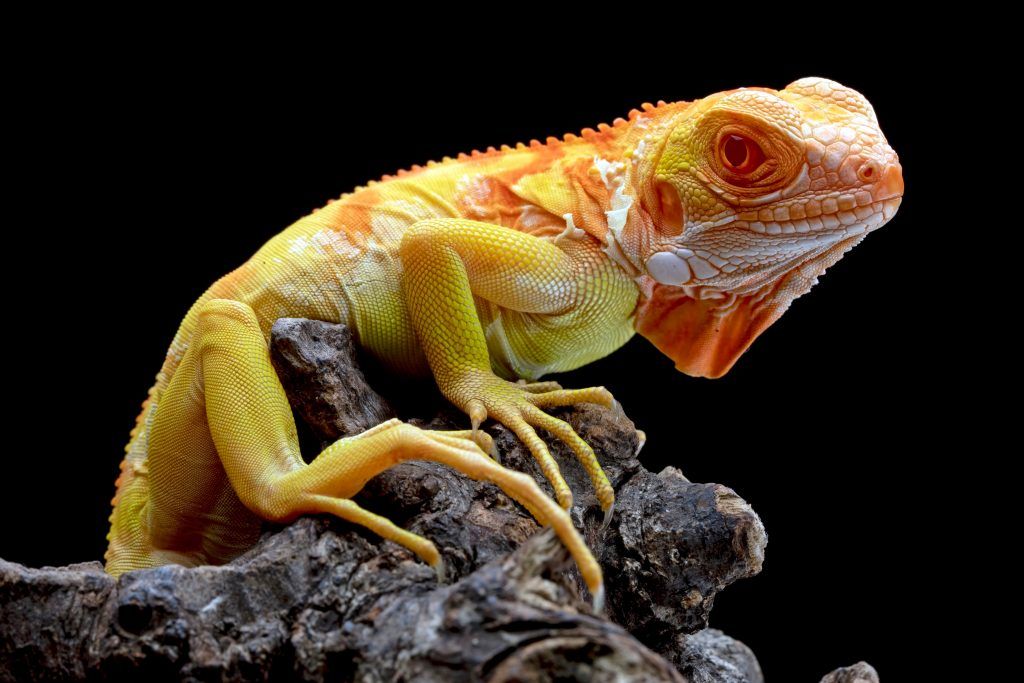
Photo Credit: Shutterstock
The crimson or super crimson iguanas are a strain of albino developed by Tom Crutchfield. They are bright yellow and orange at birth and slowly become fully orange as they mature.
Not much more is known about the actual genes at play here other than it’s a type of albino.
The average price of a super crimson iguana is currently around $3,500.
Black Iguana
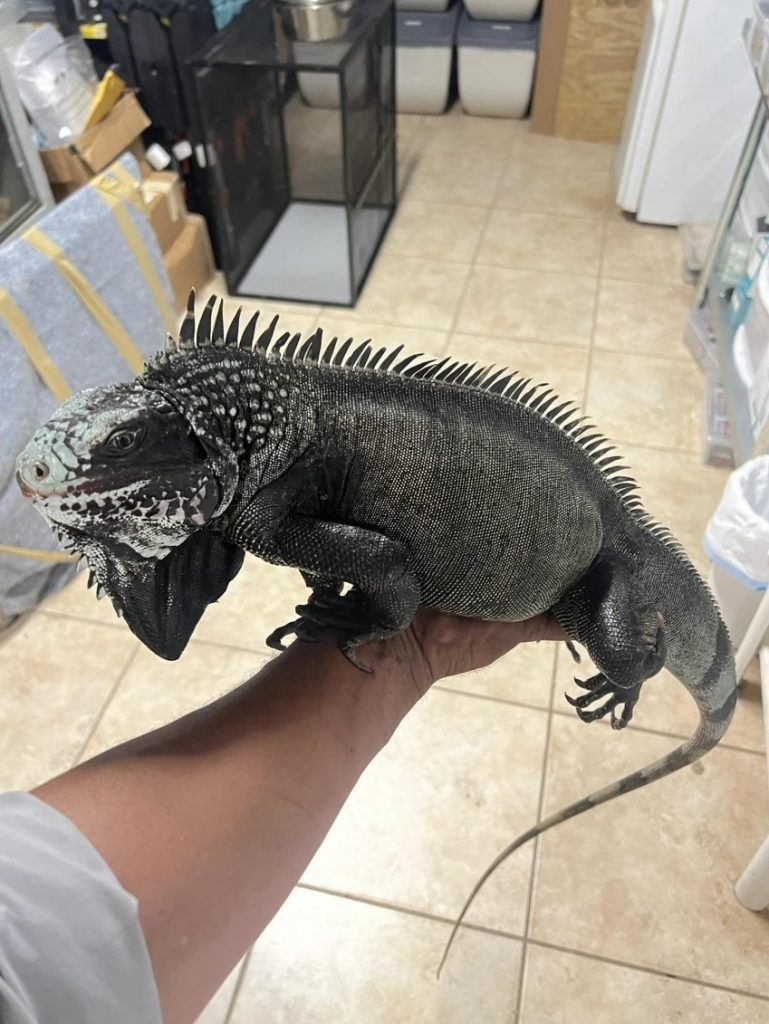
Photo Credit: Cyclosaura (FC)
The last morph on our list isn’t actually a morph. Just like the red iguana mentioned above, black iguanas are a closely related subspecies of green iguana found on the islands of Saba and Montserrat. They are also known as Saba Island iguanas.
As the name suggests, these black iguanas are mostly black, but they aren’t born that way. At birth, they are born with green bodies and black banding. As they mature they become more and more black, similar to how an increased melanin gene (IMG) would work. They can also develop shades of white, blue, and gray as they grow up as well.
The average price for a baby black iguana is between $2000 and $3000. They are rare, but not impossible to find.





